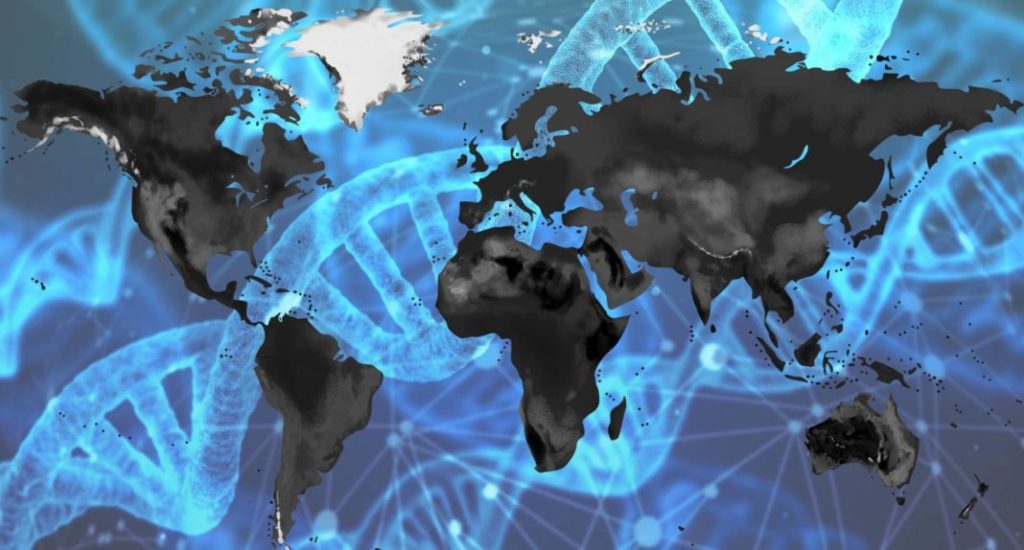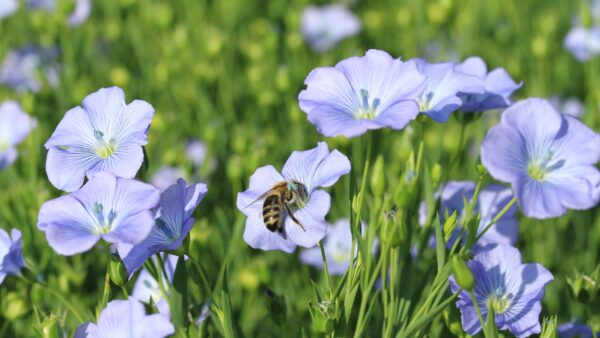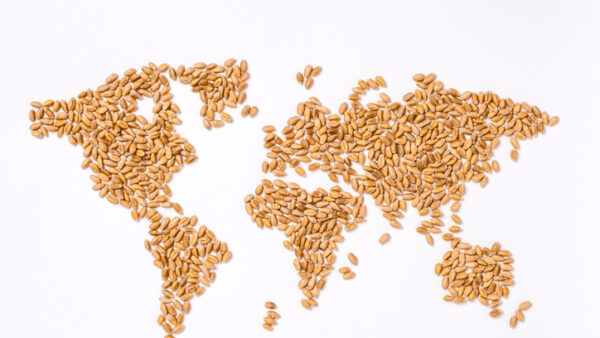Biologicals as a whole are set for a major surge when it comes to global agriculture, as demand swells for naturally-extracted, productivity-enhancing products.
Some estimates project that biologicals in the seed treatment sector could reach a value of $7 billion by 2030, depending on the industry’s ability to overcome performance barriers.
Meanwhile, the plant biostimulant market in the United States grows each year and is projected to exceed $4 billion by 2024, comprising more than half of the total U.S. market.
Three primary drivers for the biological expansion are:
1) Increased investment in research and development by small, medium and large companies.
2 ) New scientific tools and technologies that allow researchers to better screen microbes and understand the modes of action. Companies can use protein engineering, genetic modification and DNA sequencing to develop better strains. Additionally, the use of computer algorithms leads to better bioinformatics and system biology. With that knowledge, they can profile field performance and product limitations.
3) New approaches and supporting technologies that enable integrated packages performing within a system broadly.
Taking a higher-level approach, the increasing demand for more food by 2050 has pushed conversations to focus on the role of soil health. Jerry Hatfield, a former head of USDA’s Soil Tilth Center, once said: “Traits are nice, traits are fancy, but if we’re going to feed this world in the future, it’s because we finally decided to pay much more attention to the soil.”
This means making our soils considerably richer in biological activity while also increasing the organic matter and carbon equivalent capacity so the soils hold more of the moisture that falls early in the season until it is needed later in the summer.
In a 2012 interview, Bob Streit said “Biological science will become increasingly important in feeding the world — maybe even more so than genetic and trait engineering.”
Could that prediction be a reality?
It depends on the regulatory environment and how biologicals for agriculture will, or will not, be regulated.
Arguably oversimplified, biologicals can be divided into three categories when we look at the regulatory environment: plant biostimulants, plant regulators and plant biopesticides.
Plant Biostimulants. These products enhance agricultural productivity and are valued for their contribution to sustainable production systems. Plant biostimulants are recognized as supporting natural plant nutrition processes independently of products’ nutrient content, thereby improving nutrient availability, uptake, and/or use efficiency; tolerance to abiotic stress; and consequent growth, development, quality, and/or yield. This category is considered to be distinct from pesticides, which includes plant regulators, as defined by FIFRA (U.S. Federal Insecticide, Fungicide and Rodenticide Act), and fertilizers.
Market analyses suggest that materials such as seaweed extracts, humic and fulvic acids and certain amino acids will account for approximately 60% of the global plant biostimulants market by 2024.
Plant Regulators. This category of products is meant to alter or modify the growth habit of a plant or its produce, through direct physiological action, in a way that it would not normally behave under optimal growing conditions. Substances that have no other purpose than to alter a plant’s behavior, such as auxin, cytokinins and gibberellins, are recognized as plant regulators. Plant regulators are considered a pesticide and require registration as such.
Biopesticides. This category includes certain types of pesticides derived from natural materials such as animals, plants, bacteria and certain minerals. These might include biochemicals, microbials and plant-incorporated-protectants (commonly known as PIPs). Biopesticides are regulated by EPA.
Regulatory Environment
Up until now, EPA has a record of “fast-tracking” biologically based products, approving products in 12 months compared to two or three years. For example, if a new herbicide or pesticide was biologically based, EPA would fast-track that development, and if a company requested a product label for three crops, EPA might grant a label for 20 crops.
In 2015, Jim Jones of the EPA said: “We’re pretty bullish about [biologicals]. We go out of our way … to express our enthusiasm for biologicals.”
At that time, EPA had approved more than 430 biological active ingredients for use in pesticides. From 2000 to 2012, use of these products jumped from 900,000 pounds to 4.1 million pounds, according to EPA.
That trajectory has continued, but with it comes the need for clarity, added definitions and more of a structured framework.
As such, with the enactment of the 2018 Farm Bill, the Secretary of Agriculture is to prepare and submit a report within one year to the President and Congress. The goal of the report is to identify any potential regulatory, non-regulatory and legislative recommendations, including the appropriateness of any definitions for plant biostimulants, to ensure the efficient and appropriate review, approval, uniform national labeling and availability of plant biostimulant products to agricultural producers. The report is to be prepared in consultation with the EPA Administrator, the states, industry stakeholders and others as necessary.
In the United States, plant biostimulants have been regulated at the state level, whereas plant regulators are regulated by EPA. This means they have very different paths to market.
USDA’s proposed statutory language describes a plant biostimulant as “a substance or micro-organism that, when applied to seeds, plants, or the rhizosphere, stimulates natural processes to enhance or benefit nutrient uptake, nutrient efficiency, tolerance to abiotic stress, or crop quality and yield.”
Industry response was positive but cautious.
“The 2018 Farm Bill was an important milestone in creating a process to reach standards for biostimulant technology, but more effort remains ahead to reach a consensus on national requirements,” says John Wolf, Agricen senior director of innovation.
Nufarm’s Tom Kroll, seed treatment product and technical manager, adds that “this definition will aid in the regulation of these materials and is the first step that will eventually force a review of consistency of performance and what’s truly a biostimulant and what’s ‘snake oil.'”
Since the passing of the 2018 Farm Bill, EPA has drafted guidance for pesticide registrants on plant regulator label claims, including biostimulants.
According to the Biological Products Industry Alliance (BPIA), should this draft guidance become official, it would change the regulatory path of biostimulants and has the potential to place an economic burden on manufacturers, companies producing end-use projects, federal and state regulatory agencies and growers.
Just the economic impact of the guidance on manufacturers could reach or exceed $449 million annually, totaling more than $2 billion over a five-year period.
Of concern is that EPA’s draft guidance does not recognize that a plant biostimulant might have more than one function depending on the timing of application, application rate or concentration, use pattern, formulation process and/or intent.
Additionally, Industry is asking for more clarification around the definition of plant regulators to further distinguish products excluded from regulation by FIFRA. BPIA believes this will help to avoid the ambiguity in product classification and inconsistency in regulated status between the various types of products.
BPIA and the U.S. Biostimulant Coalition submitted comments to EPA on the draft guidance in July. Comments from stakeholders and industry groups are under review by EPA. A final guidance document by EPA is not expected until spring 2020.
When we look around the world, other countries are have recently gone to work on this topic, too.
Around the World
In March 2019, the EU took a claims-based approach for its regulatory framework. It recognizes that the functionality of any single material may be altered by its processing, formulation or use context. The new legislation specifically defines and includes plant biostimulants and clarifies their distinction from plant regulators (considered pesticides under EU pesticide law).
The EU defines plant biostimulants as “a product stimulating plant nutrition processes independently of the product’s nutrient content with the sole aim of improving one or more of the following characteristics of the plant or the plant rhizosphere: (a) nutrient use efficiency; (b) tolerance to abiotic stress; (c) quality traits; (d) availability of confined nutrients in soil or rhizosphere.
BPIA believes the EU’s description of plant biostimulants is instructive as it recognizes that plant biostimulants have no direct action against pests, and therefore do not fall within the regulatory framework of biopesticides.
The EU legislation treats all plant biostimulant materials beyond basic nutrients that aid in plant nutrition processes, as a subset of fertilizing products (and not as pesticides). This action follows the essential logic that such materials enhance the normal functioning of plants through contributions to improved plant nutrition. The proposed direction by EPA to include such technologies in an expanding definition of pesticides will create barriers to competitiveness for U.S. companies in the global agricultural inputs market.
Stay tuned — More to Come …













